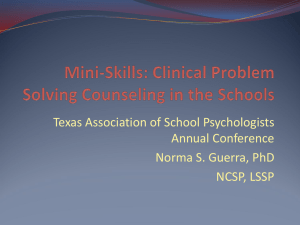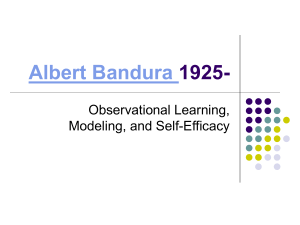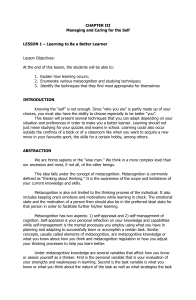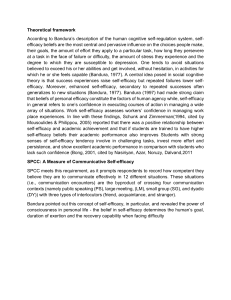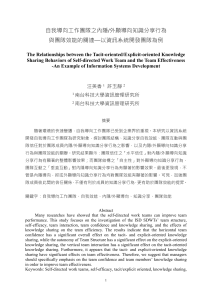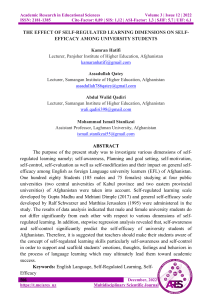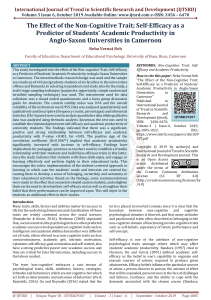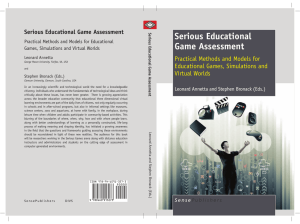Content Validation of the Children's Academic Self-efficacy Scale
advertisement
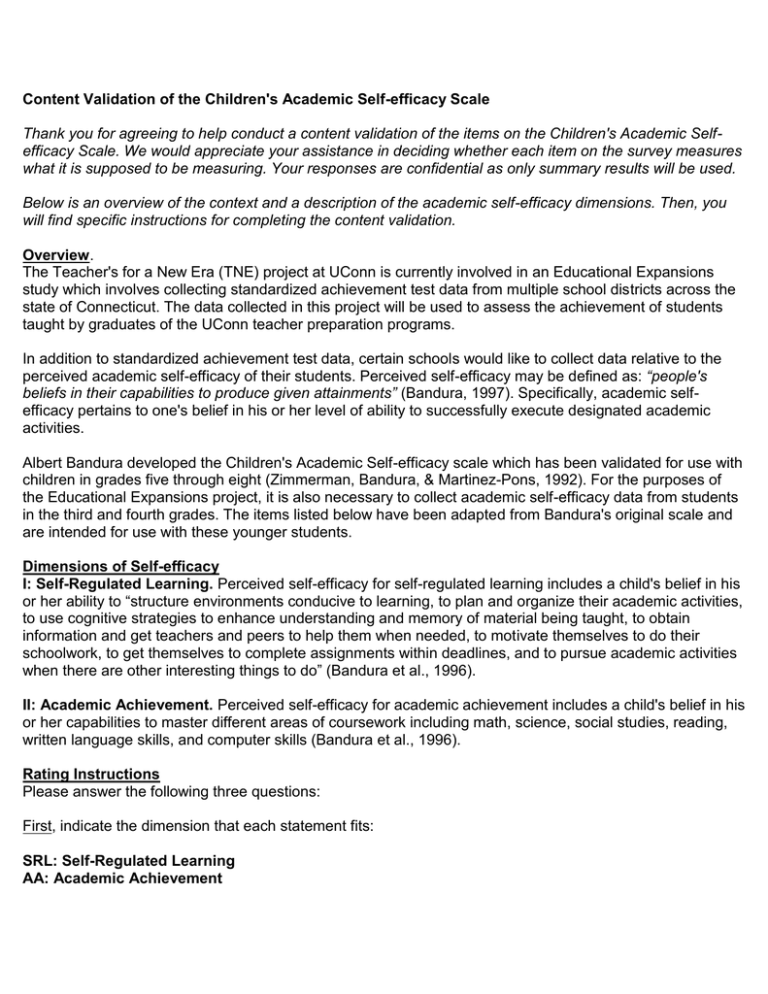
Content Validation of the Children's Academic Self-efficacy Scale Thank you for agreeing to help conduct a content validation of the items on the Children's Academic Selfefficacy Scale. We would appreciate your assistance in deciding whether each item on the survey measures what it is supposed to be measuring. Your responses are confidential as only summary results will be used. Below is an overview of the context and a description of the academic self-efficacy dimensions. Then, you will find specific instructions for completing the content validation. Overview. The Teacher's for a New Era (TNE) project at UConn is currently involved in an Educational Expansions study which involves collecting standardized achievement test data from multiple school districts across the state of Connecticut. The data collected in this project will be used to assess the achievement of students taught by graduates of the UConn teacher preparation programs. In addition to standardized achievement test data, certain schools would like to collect data relative to the perceived academic self-efficacy of their students. Perceived self-efficacy may be defined as: “people's beliefs in their capabilities to produce given attainments” (Bandura, 1997). Specifically, academic selfefficacy pertains to one's belief in his or her level of ability to successfully execute designated academic activities. Albert Bandura developed the Children's Academic Self-efficacy scale which has been validated for use with children in grades five through eight (Zimmerman, Bandura, & Martinez-Pons, 1992). For the purposes of the Educational Expansions project, it is also necessary to collect academic self-efficacy data from students in the third and fourth grades. The items listed below have been adapted from Bandura's original scale and are intended for use with these younger students. Dimensions of Self-efficacy I: Self-Regulated Learning. Perceived self-efficacy for self-regulated learning includes a child's belief in his or her ability to “structure environments conducive to learning, to plan and organize their academic activities, to use cognitive strategies to enhance understanding and memory of material being taught, to obtain information and get teachers and peers to help them when needed, to motivate themselves to do their schoolwork, to get themselves to complete assignments within deadlines, and to pursue academic activities when there are other interesting things to do” (Bandura et al., 1996). II: Academic Achievement. Perceived self-efficacy for academic achievement includes a child's belief in his or her capabilities to master different areas of coursework including math, science, social studies, reading, written language skills, and computer skills (Bandura et al., 1996). Rating Instructions Please answer the following three questions: First, indicate the dimension that each statement fits: SRL: Self-Regulated Learning AA: Academic Achievement Second, indicate the certainty of your placement of the statement in the proper dimension: 1: Not Very Sure 5: Very Sure Third, indicate how relevant you feel each item to be for the dimension you chose: 1: Low/Not Relevant 5: Highly Relevant Q. Table Please choose only 'one' response in each column. Dimension 1. How well can you SRL learn math? AA 2. How well can you finish your homework on time? 3. How well can you keep your desk clean and organized? 4. How well can you learn to use computers? 5. How well can you learn science? 6. How well can you learn social studies? 7. How well can you do your homework when there are other fun things to do? 8. How well can you learn to write? 9. How well can you pay attention in class? 10. How well can you learn to read? 11. How well can you find the books you need in the library? 12. How well can you remember things your teacher tells you? 13. How well can you learn to speak a different language? 14. How well can you do your work without your teacher reminding you? Certainty 1 2 3 4 5 Relevance 1 2 3 4 5 Now answer the following questions in regard to the items above. 1. Do you have any suggestions regarding the definition and operationalization of any of the dimensions? ______________________________________________________________ ______________________________________________________________ ______________________________________________________________ 2. Do you have any suggestions for improving the content coverage within each dimension? ______________________________________________________________ ______________________________________________________________ ______________________________________________________________ 3. Do you have any suggestions for the items that you would add, delete, or reword? ______________________________________________________________ ______________________________________________________________ ______________________________________________________________ 4. How appropriate do you feel the items are for use with third and fourth grade students? How would you change any items to make them more appropriate for this age level? ______________________________________________________________ ______________________________________________________________ ______________________________________________________________ Thank You!

